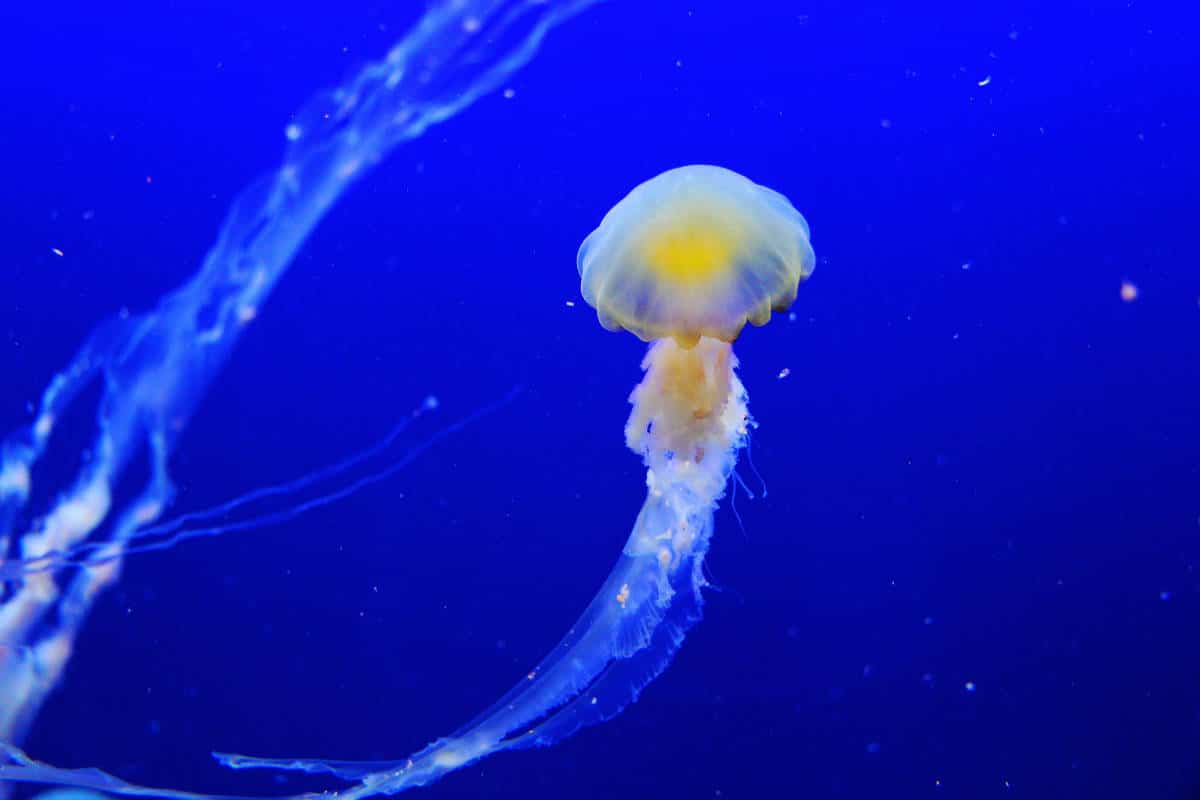
Warmer oceans will cause many plankton species to seek refuge around the poles, displacing other species, researchers suspect.
The ocean is teeming with microscopic plants and animals. These micro-organisms that mainly live floating in the water are also called plankton. Scientists suspect that as the climate warms and ocean temperatures rise, we will see significant changes in plankton distribution. Where exactly do they migrate to? Researchers have it in a new study picked.
Plankton is very important to the ocean. Although each organism is small, as a whole they make an important contribution to ecosystems. For example, phytoplankton is the largest primary producer of oxygen and absorbs CO2 during photosynthesis. This makes these microorganisms important drivers of the oceanic carbon cycle. Phytoplankton is also a food source for zooplankton, which in turn feeds fish and marine life, right down to the giant blue whale.
To get an idea of the migration ahead, the team created new distribution maps for more than 860 species of phytoplankton and zooplankton based on various statistical algorithms and climate models. They then superimposed these maps to determine what plankton communities will look like in the future.
Diversity
The researchers found that the diversity of both phytoplankton and zooplankton is expected to increase in many regions in the future. This is because warmer water generally promotes greater diversity. But, if temperatures rise too much – think temperatures above 25 degrees Celsius – it will be too hot for zooplankton underfoot. This means that under these temperatures, the diversity of phytoplankton will increase, while the diversity of zooplankton will decrease. This may lead to a reduction in the variety of zooplankton in the tropics.
Poland
At the same time, many species will seek refuge elsewhere. Several species of plankton that we still find in the tropics may move to the poles. Here they will then replace those that are adapted to cooler waters. It means that new communities are emerging around the poles, which have never existed in these combinations before. Moreover, these mutual relationships are not clearly aligned – with all the consequences that entails for marine food webs.

Left: The diversity of zooplankton species is currently greatest in tropical and subtropical regions (yellow) and lowest in polar seas (purple). Right: In subpolar seas, the number of zooplankton species could increase by as much as 40 percent in 2081-2100, while it decreases in tropical oceans. Image: Benedetti et al, Nat Commu, 2021
“In some parts of the ocean we will see an increase in species, which at first glance may seem positive,” said study leader Fabio Benedetti. “But this increase in diversity could actually pose a serious threat to the existence and functioning of established marine ecosystems.”
big vs small
Why Plankton Communities Change? This is because small organisms can thrive better than larger species in the new habitats. Not only does this change the composition of communities, but the relationships between small and large species are also subject to change. Smaller organisms become more abundant and numerous, especially in high and temperate latitudes. Larger organisms will actually decrease in numbers.
Changes
The researchers expect the greatest changes to occur in oceans at high and temperate latitudes – precisely those regions that are crucial for carbon fixation and fisheries. That’s right. Plankton plays an important role in the ‘fixation’ of oceanic carbon. Some of the carbon captured by phytoplankton sinks to the deep ocean, effectively removing it from the atmosphere. But if smaller species replace the larger ones, this transfer of carbon to the deep ocean will decrease. In addition, changes in the species composition and size of the organisms will have a negative effect on the ecological pyramid and thus the fish yield.
How big these changes will be exactly, however, remains to be seen. We do know that plankton migration has been going on for at least several decades. For example, small one-eyed crustaceans have been displacing larger species in the North Atlantic as a result of climate change since the 1950s. This has also reduced the storage of atmospheric CO2 in the deep sea. In addition, jellyfish – which can also be classified as zooplankton – are moving north. In 2005, Ireland suffered a massive influx of tropical jellyfish, which devastated salmon farms along the coast. “Events like these show that shifts in plankton distribution are already underway,” said researcher Meike Vogt.
Source material:
“Plankton head polewards” – ETH Zurich
Image at the top of this article: Sharon Ang via Pixabay